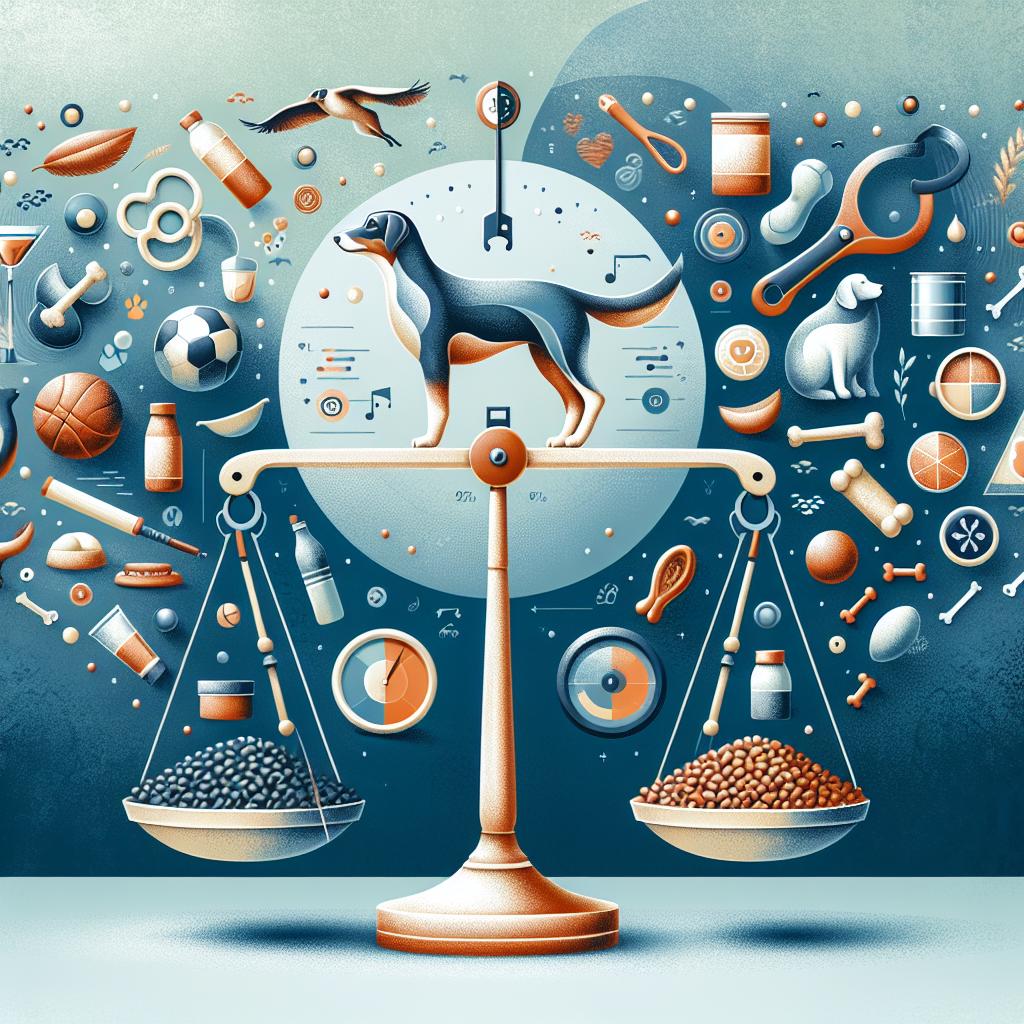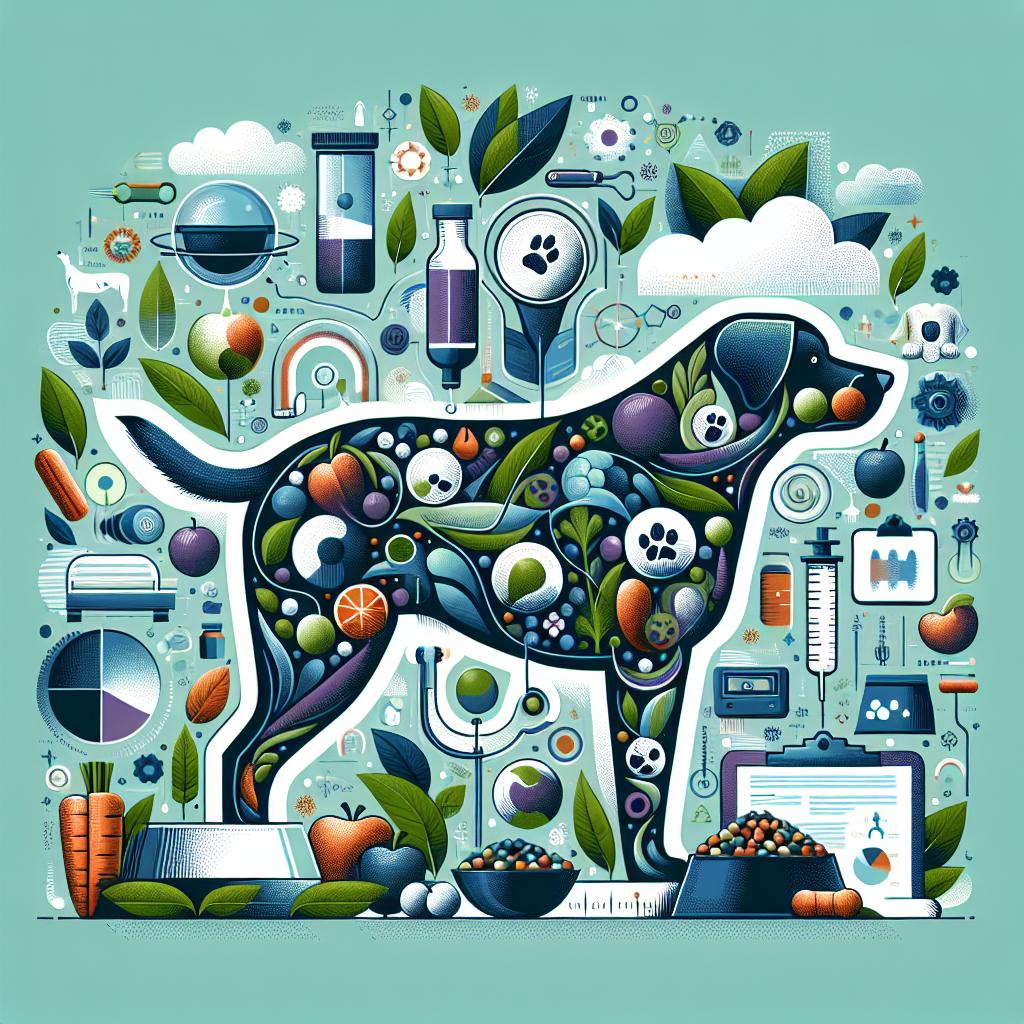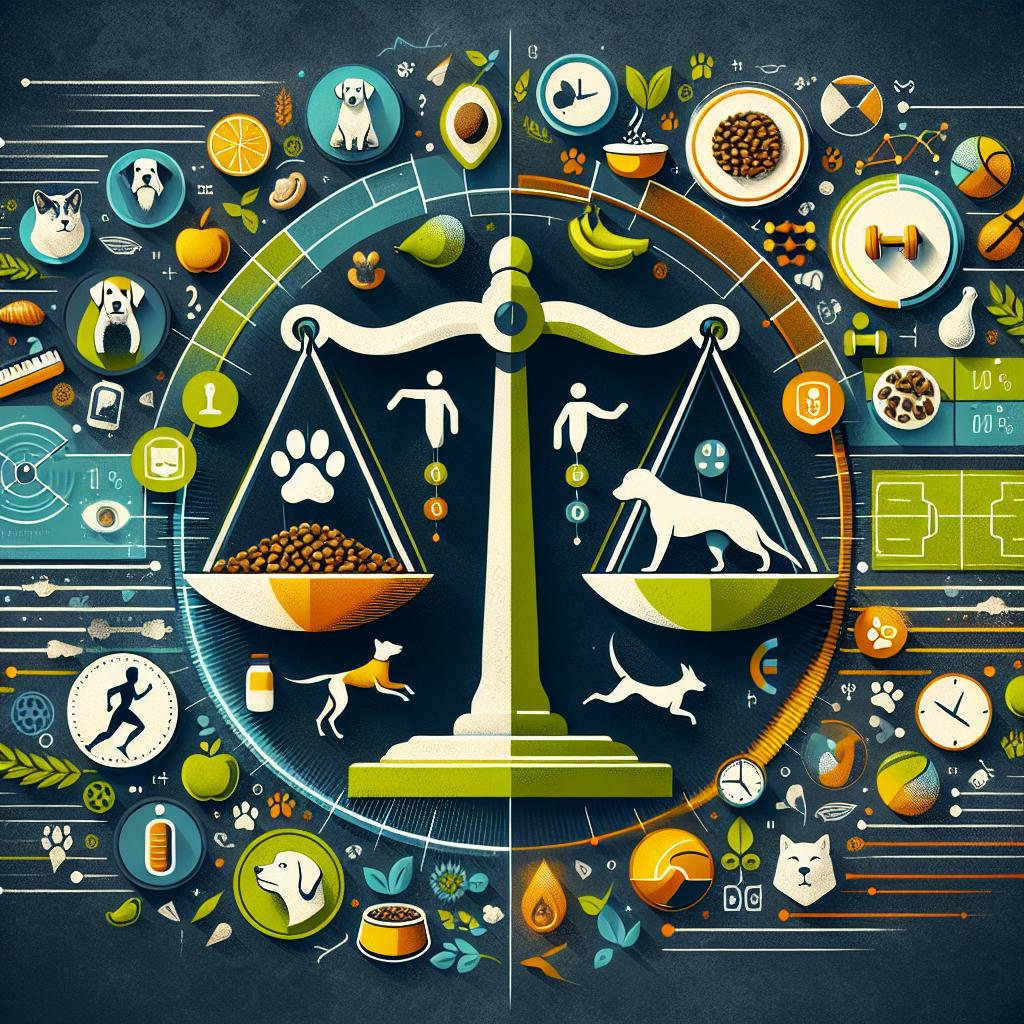Introduction:
In today’s world, where wellness trends dominate human conversations, it’s essential to remember that our furry companions deserve the same level of care and consideration when it comes to their health. Just like us, dogs can struggle with obesity, which can lead to serious health issues and diminish their quality of life. As pet owners, we are tasked with the crucial responsibility of ensuring our dogs maintain a healthy weight, and diet plays a pivotal role in this endeavor. In this article, we will explore effective strategies and insights on how to prevent obesity in dogs through mindful dietary choices. Whether you’re a new pet parent or a seasoned dog lover, understanding proper nutrition can empower you to help your canine companion lead a longer, healthier, and happier life.
Understanding the Nutritional Needs of Dogs for Optimal Health
To ensure your dog maintains a healthy weight, it is crucial to provide a balanced diet tailored to their specific needs. The right mix of proteins, fats, and carbohydrates plays a significant role in facilitating metabolic functions and overall health. Here are some key components to consider:
- Quality Proteins: Choose high-quality protein sources such as chicken, fish, and lamb, which help support muscle development and repair.
- Healthy Fats: Include moderate amounts of omega-3 and omega-6 fatty acids to promote skin and coat health while also supporting cognitive function.
- Complex Carbohydrates: Add whole grains and vegetables to provide energy and essential nutrients without unnecessary calories.
Monitoring portion sizes is essential in preventing obesity. Use the following table as a guide for daily caloric intake based on your dog’s weight and activity level:
| Weight (lbs) | Active Dog (Calories/day) | Less Active Dog (Calories/day) |
|---|---|---|
| 10 | 400 | 300 |
| 20 | 800 | 600 |
| 30 | 1200 | 900 |
| 50 | 1600 | 1200 |
Additionally, engaging your dog in regular physical activities and understanding their unique nutritional requirements will contribute significantly to their weight management. By controlling calorie intake and encouraging exercise, you can help your furry friend achieve optimal health and a long, happy life.

Choosing Balanced Diet Options to Support Weight Management
Maintaining a healthy weight for your dog starts with careful selection of their food. Opt for high-quality dog food that lists whole meats as the primary ingredient. Look for products that are formulated specifically for your dog’s breed, size, and age to ensure they receive the right balance of nutrients. You can create homemade meals, but it’s essential to consult with a veterinarian or a pet nutritionist to ensure the recipes are balanced. Additionally, incorporate more vegetables into their diet; options like carrots, green beans, and sweet potatoes are not only low in calories but also rich in fiber, which aids in digestion and promotes a feeling of fullness.
Portion control is another vital aspect when managing your dog’s weight. Measure their food using a standard cup and avoid free-feeding, as this can lead to overeating. To streamline your approach, consider creating a feeding schedule. It’s also helpful to limit treats, opting for healthier options such as freeze-dried fruits or low-calorie treats. Below is a simple table illustrating various treat options and their calorie counts:
| Treat | Calories per Treat |
|---|---|
| Carrot Sticks | 4 |
| Green Beans | 3 |
| Apple Slices (no seeds) | 10 |
| Commercial Low-Calorie Treats | 5-15 |

Portion Control and Feeding Practices for Dog Owners
Maintaining a healthy weight for dogs requires careful attention to portion sizes and feeding practices. Understanding your dog’s caloric needs based on their age, breed, and activity level is essential. To ensure you’re feeding the right amount, consider the following tips:
- Measure Food Accurately: Use a measuring cup or food scale to provide precise portions, rather than estimating.
- Scheduled Feeding: Establish a specific feeding schedule instead of free-feeding. This helps regulate your pet’s appetite.
- Healthy Treats: Opt for low-calorie treats, and limit their portions to ensure that they don’t contribute disproportionately to your dog’s daily caloric intake.
Additionally, it’s important to adapt feeding practices based on your dog’s life stage and any weight-related health concerns. An effective approach to portion control includes keeping a food diary or using a mobile app to track what and when your dog eats. This way, you can make necessary adjustments responsibly. Consider the following guidelines:
| Dog Size | Daily Caloric Needs (Approximate) |
|---|---|
| Small (up to 20 lbs) | 200 – 400 calories |
| Medium (21 – 50 lbs) | 400 – 800 calories |
| Large (51 – 90 lbs) | 800 – 1200 calories |
By following these practices and being conscious of your dog’s weight, you can help prevent obesity and promote a healthier, happier life for your furry friend.

Incorporating Exercise into Your Dogs Daily Routine for Weight Prevention
Establishing a regular exercise routine for your dog is crucial to maintaining a healthy weight and preventing obesity. Dogs, much like humans, require physical activity to burn calories, strengthen muscles, and keep their minds sharp. Here are some engaging activities you can incorporate into your dog’s daily schedule:
- Daily Walks: Aim for at least 30 minutes of walking each day; vary the routes to keep it interesting.
- Play Fetch: This classic game can provide high-energy bursts of exercise while reinforcing obedience.
- Agility Training: Set up a small obstacle course in your yard for added challenges and fun.
- Swimming: A great way to exercise joints while beating the heat, ideal for buoyant breeds.
In addition to these activities, consider setting specific exercise goals for your dog, tracking their progress over time. Utilize a simple table to monitor daily routines, keeping it flexible and enjoyable:
| Day | Activity Type | Duration | Comments |
|---|---|---|---|
| Monday | Walk | 30 minutes | Explored new trail |
| Tuesday | Fetch | 20 minutes | Used tennis ball |
| Wednesday | Agility Training | 30 minutes | Learned new jumps |
| Thursday | Swimming | 25 minutes | Perfect for hot day |
Q&A
Q: Why is dog obesity a growing concern for pet owners?
A: Dog obesity is a growing concern because it can lead to a variety of health issues, including diabetes, heart disease, and joint problems. Just like in humans, excess weight can significantly diminish a dog’s quality of life and shorten their lifespan. Pet owners often underestimate portion sizes and the impact of certain treats, making it essential to understand how diet plays a key role in preventing obesity.
Q: What are the main causes of obesity in dogs?
A: The main causes of obesity in dogs typically include overfeeding, lack of exercise, and consuming high-calorie treats or human food. Additionally, some dog breeds are more prone to weight gain, and certain medical conditions can contribute to obesity. Understanding these factors helps pet owners take a proactive approach to their dog’s health.
Q: What role does proper diet play in preventing obesity in dogs?
A: A proper diet is crucial in preventing obesity as it ensures dogs receive the right balance of nutrients without excess calories. Feeding your dog high-quality, veterinarian-recommended dog food tailored to their age, breed, and activity level can support their overall health. Portion control is equally important, along with choosing the right types of treats and avoiding table scraps.
Q: How can I determine the right portion size for my dog?
A: To determine the right portion size, consult your veterinarian, as they can provide guidelines based on your dog’s specific needs. Generally, dog food packaging includes recommended serving sizes based on weight. Keep in mind that portion sizes may vary due to factors like age, activity level, and metabolic rate, so monitoring your dog’s body condition is key.
Q: Are there specific foods I should avoid giving my dog?
A: Yes, there are certain foods you should avoid, including those that are high in fat and sugar. Foods like chocolate, onions, grapes, and anything seasoned with garlic are toxic to dogs. Additionally, high-calorie human snacks—such as chips, cookies, and sweets—should be avoided to prevent unwanted weight gain. Stick to dog-specific treats that are low in calories and rich in nutrients.
Q: How important is exercise in conjunction with diet?
A: Exercise is immensely important in conjunction with diet because it helps your dog burn calories, build muscle, and maintain a healthy weight. Regular physical activity, tailored to your dog’s age and health (like walks, playtime, or agility training), can significantly enhance their well-being. A balanced approach that includes both a nutritious diet and regular exercise is essential for preventing obesity.
Q: What are some signs that my dog may be overweight?
A: Signs that your dog may be overweight include difficulty in feeling their ribs (they should be easily palpable), a lack of visible waist when viewed from above, and a tendency to become easily fatigued or less active. If you’re unsure, regular vet check-ups can help identify any weight issues early on and provide strategies for maintaining a healthy weight.
Q: Can I use my dog’s favorite treats without fear of weight gain?
A: Yes, your dog can still enjoy treats, but moderation is key. Opt for low-calorie treats and keep their total calorie intake in mind. You can also use healthy alternatives, such as small pieces of carrot or apple, which can satisfy your pup’s cravings without the extra calories. Just remember that treats should make up no more than 10% of their daily caloric intake.
Q: How can I make healthy diet changes enjoyable for my dog?
A: Making healthy diet changes enjoyable can involve incorporating variety and fun into mealtime. Try different flavors and textures of high-quality dog food, and engage in interactive feeding by using puzzle toys that dispense food as your dog plays. Additionally, engaging your dog in training sessions that include healthy treats can make the experience rewarding and stimulating for them.
Q: What should I do if my dog is already overweight?
A: If your dog is already overweight, don’t panic! Start by consulting your veterinarian for a tailored weight loss plan that includes dietary adjustments and an exercise regimen. Gradual weight loss is the safest approach, and with consistency and dedication, you can help your furry friend return to a healthy weight and enjoy a happier, more active life.
The Way Forward
navigating the path to a healthy weight for your dog is a journey that requires dedication, knowledge, and a sprinkle of love. By understanding the foundational elements of canine nutrition and making informed dietary choices, you can help prevent obesity and promote a happier, more active life for your furry friend. Remember, moderation is key, and every bite counts. Regular exercise, portion control, and nutritious foods are your allies in this endeavor. As you embrace the responsibility of keeping your pet fit, you’ll not only add years to their life but also enhance the quality of those precious moments you share. So, take that first step today—your dog will thank you with tail wags and joyful barks for many years to come.

